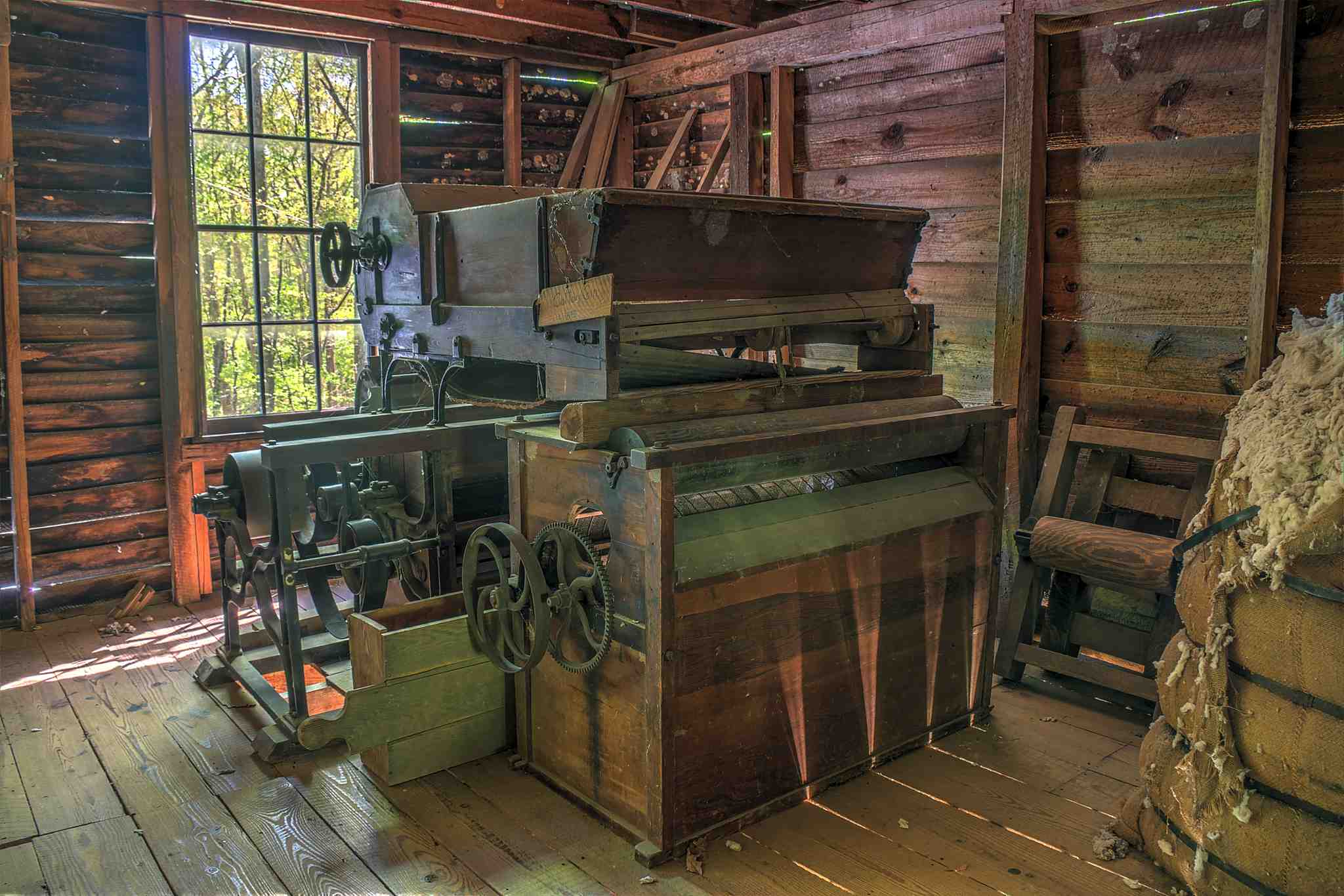Eli Whitney. You’ve all heard of him. You know, he’s that guy that indirectly led to an increase in slavery and all of that horrible stuff. He was just trying to help make life easier (and make a little cash in the process), but his ideas made a HUGE impact on America.
I taught a lesson on Eli Whitney this week. In my opinion, you need to make sure your students know 2 things about Eli Whitney:
1- He invented the cotton gin
2- He came up with the idea of using interchangeable parts in manufacturing
It can be hard to visualize how the cotton gin works without seeing one (or at least a diagram of one). I found the BEST video I have ever seen showing the operation of a cotton gin. Now granted, this video is in black and white and is probably older than me, but there is no better video that I have found which has clear shots of the teeth in the wheels. When you show this to your students, just let them know ahead of time that it is an older black and white video and that there is a cheesy guy in a wig pretending to be Eli Whitney.
(Side note: I have often found that students tend to dismiss something they see as old or in black and white IF they haven’t been prepped for it. Before I show an older video, I always explain that the video explains or illustrates something so much better than other videos that it still has relevance and is worth showing. Once I acknowledge any obviously cheesy moments or outdated phrases or clothing, it takes away much of the novelty of it, and the students can move past it and just absorb what the video is showing.)
Another “decent” video (although NOT the History Channel’s best production) is this one. You may want to use this in between your discussion of the cotton gin and interchangeable parts.
Now, here’s what I’m REALLY proud of! I decided that I wanted to have my students make some kind of crafty-type thing to help them remember how the cotton gin worked. So I enlarged and printed the picture below on cardstock (you could use regular paper too if you had to).
 I then gave my students some glue, cotton balls, and unpopped popcorn kernels (to represent cotton seeds). They had to glue the stuff on the diagram in such a way as to represent what the cotton gin did. Use liquid glue if you do this. None of this will stick if you use a glue stick. Also, tell your students to tear apart the cotton balls into smaller chunks. The balls will last longer, and it just looks better.
I then gave my students some glue, cotton balls, and unpopped popcorn kernels (to represent cotton seeds). They had to glue the stuff on the diagram in such a way as to represent what the cotton gin did. Use liquid glue if you do this. None of this will stick if you use a glue stick. Also, tell your students to tear apart the cotton balls into smaller chunks. The balls will last longer, and it just looks better.

Now, this will seriously take less than 5 minutes, so why should you do it? Because sometimes your students need to do something hands-on. Because sometimes your students need to do something other than take notes. Because sometimes you need to do something different. And if you think this craft may be too “childish” for your kids, I think you underestimate how refreshing a change of pace is when you are sitting in class and listening to people talk all day long. Did I mention that it would be GREAT reinforcement for tactile learners…or really anyone?
If this idea is too simple for your “high-minded classroom ways,” (haha) try this: Divide your students into small groups and give them a poster board, cotton balls, popcorn, and glue and say…”Make me a diagram of a cotton gin.” or “Make a poster demonstrating how a cotton gin works.”
Before you get your students pasting and crafting, you need to reinforce the impact of the cotton gin. It is pointless for your students to know how the cotton gin works if they don’t know the impact it had on the South (and really the world). I used a table to show the students the difference the cotton gin made. Have them cut out each box and put it in the correct spot in the chart. (See link at the bottom of the article.)
One thing that you need to discuss when covering the effects of the cotton gin is the positive and negative effects of the invention. Have a brief discussion about the good and bad that has resulted from various inventions (start off discussing the cell phone). Have students do some deep thinking about consequences and cause and effect (maybe a short free-write). Many people talk about the fact that the cotton gin led to an increase in slavery but often overlook the fact that the cotton gin also provided a way for poor farmers living in the South (who didn’t own slaves) to better support their family. Also, cotton provided the raw materials necessary for textile mills to expand which provided more jobs.
Once you cover the cotton gin and move on to interchangeable parts, there’s more fun stuff to do. After explaining interchangeable parts and their importance, may sure you show them that they are surrounded by hundreds of examples of them. You can use your board markers as a handy example. If you lose the top to one, you can replace it with another.
Have your students go on a scavenger hunt around the room for examples of interchangeable parts. You can divide them into groups and have them race. Whoever gets done first is the winner and gets candy or extra points on a quiz. I would make them find about 30 different examples within the classroom. Or, you could also set a timer and see which group can come up with the most examples of items with interchangeable parts in the time allotted. Pretty much anything with a screw has interchangeable parts. In fact, a screw is an interchangeable part! Students are probably wearing examples of items with interchangeable parts as well: watches, zippers, buttons, earrings, etc.
A word of warning, apparently there is a theory out there called the Mandela effect, where a group of people collectively remembers something wrong. There’s a bunch of articles devoted to this. Well, some crazy people claim that Eli Whitney was black and that he invented the cotton gin to reduce the work of slaves. It’s a crazy Internet theory with no reliable evidence, but there’s always that ONE kid in class who’s read stuff like that and brings it up. Haha! The point is, the cotton gin changed the course of American history, regardless of the physical characteristics of the inventor!
Here’s a link to my cotton gin table. It’s pretty simple. You can add more stuff to it if you would like (specific statistics about cotton production and slavery). The fonts may look weird if you don’t have them on your computer.
Featured image courtesy of Dsdugan – Own work, CC0, https://commons.wikimedia.org/w/index.php?curid=58026846

